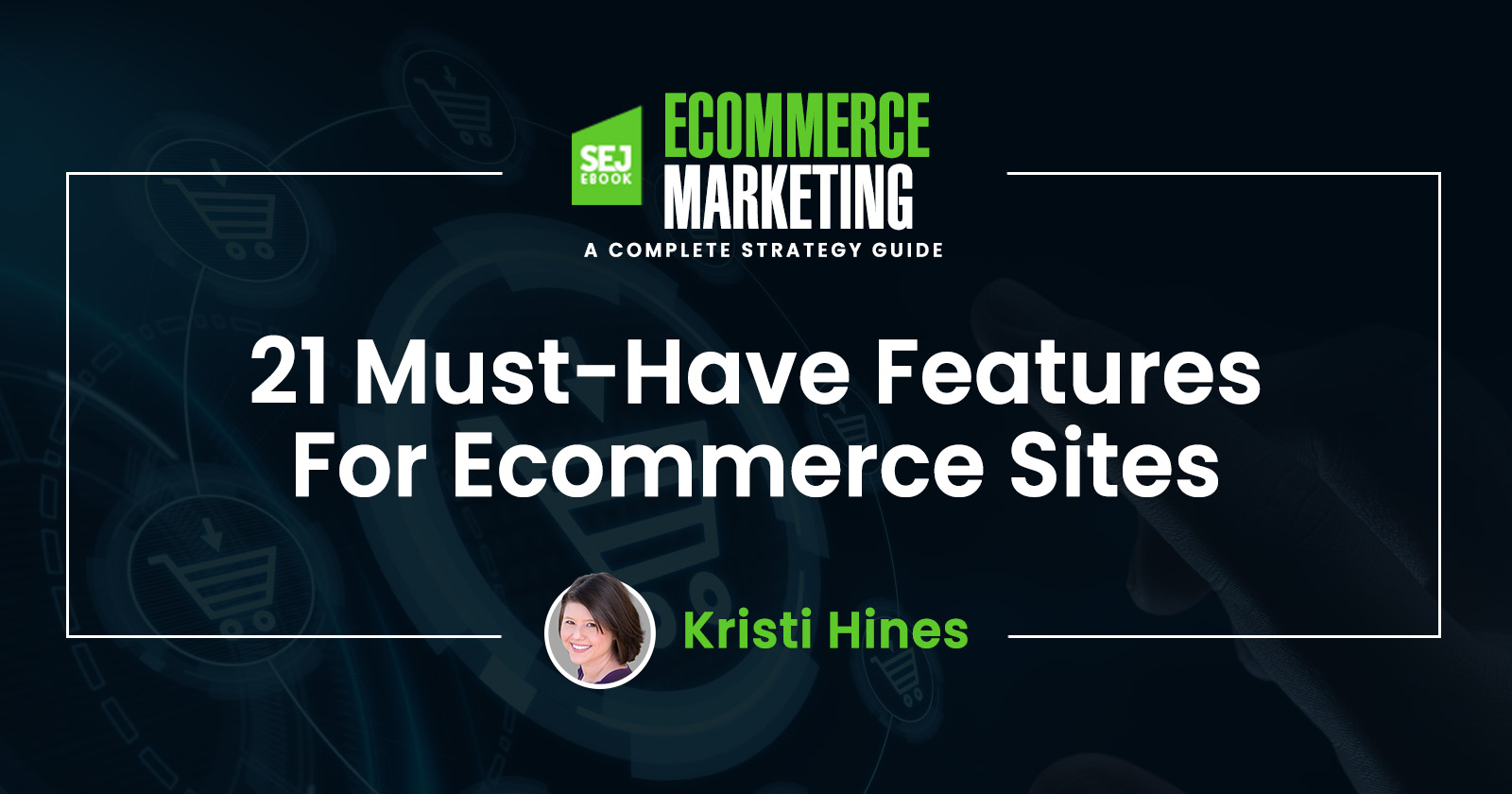Are you creating a new ecommerce store for your business or looking for ways to improve the functionality of your current store?
Creating an ecommerce experience that is sure to delight your customers can be as simple as taking a little inspiration from the top ecommerce brands.
The following are 21 must-have features for ecommerce sites.
Example brands were selected from The Top 50 Ecommerce Companies in the U.S. list published by Similarweb.
1. User-Friendly Navigation
The key to helping customers find the products they need quickly is to offer a user-friendly navigation system.
Products should be logically categorized, with the most popular categories listed first.
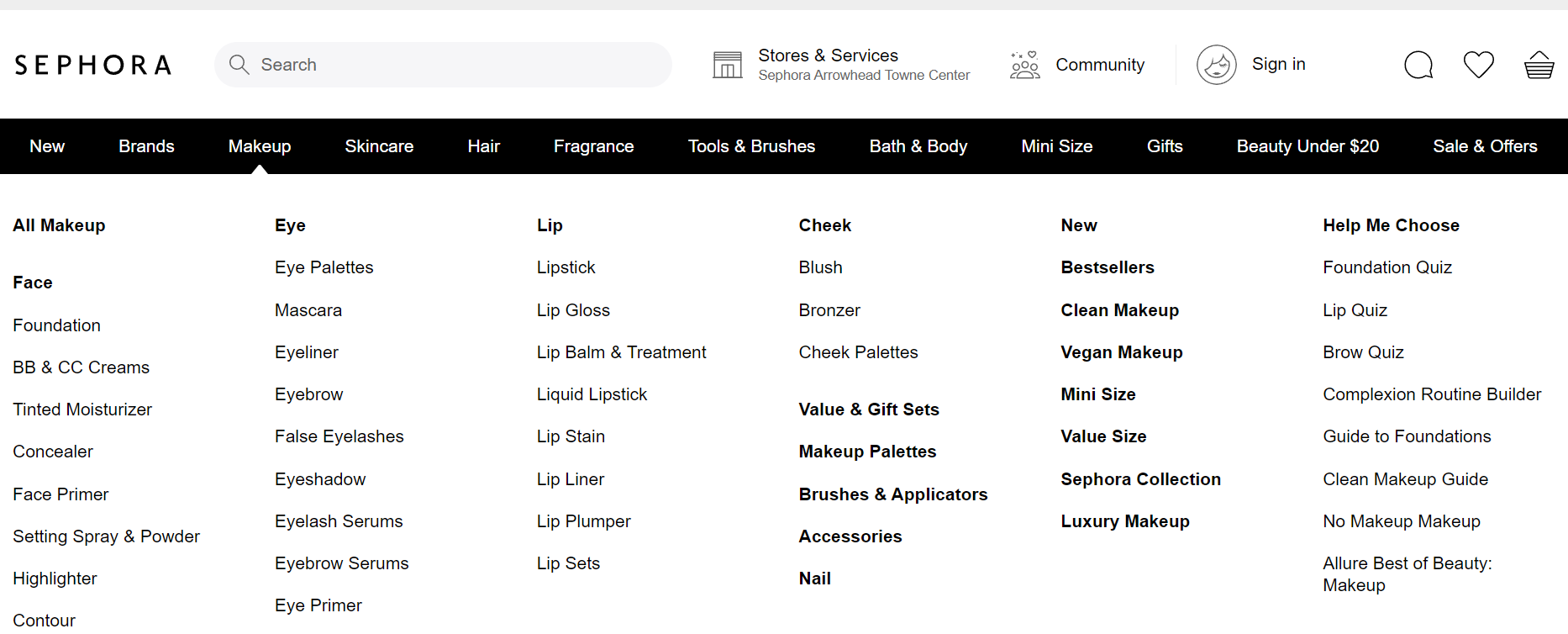 Screenshot from Sephora.com, March 2022
Screenshot from Sephora.com, March 2022Sephora knows how customers like to shop.
Some specifically seek out products by brand, while others shop by category. Their navigation bar reflects this organization, along with quick links to inexpensive and sale products.
2. Site Search
In addition to user-friendly navigation, site search is a feature found on most of the top ecommerce sites.
It allows customers to bypass the navigation and search for exactly what they want.
 Screenshot from Nordstrom.com, March 2022
Screenshot from Nordstrom.com, March 2022Nordstrom offers a site search with suggestions for popular brands and products that match what you enter.
Most site searches can be tracked using Google Analytics.
3. Footer Navigation
Have you considered the best way to utilize your website’s footer to help customers find your top products?
Try a list of links to the top products, services, and information that customers want to find.
 Screenshot from T-mobile.com, March 2022
Screenshot from T-mobile.com, March 2022T-Mobile uses its footer to direct customers to their social media profiles, English and Spanish sites, featured phones and plans, support, and company information.
Their footer effectively includes links to everything they want both customers and search crawlers to discover from any page throughout their website.
4. Product Videos
Adding video to your product pages can increase conversions.
According to Think With Google, over 50% of shoppers said that online video helped them make a decision on which brand or product to purchase.
Most ecommerce platforms allow retailers to add videos and images to their product pages.
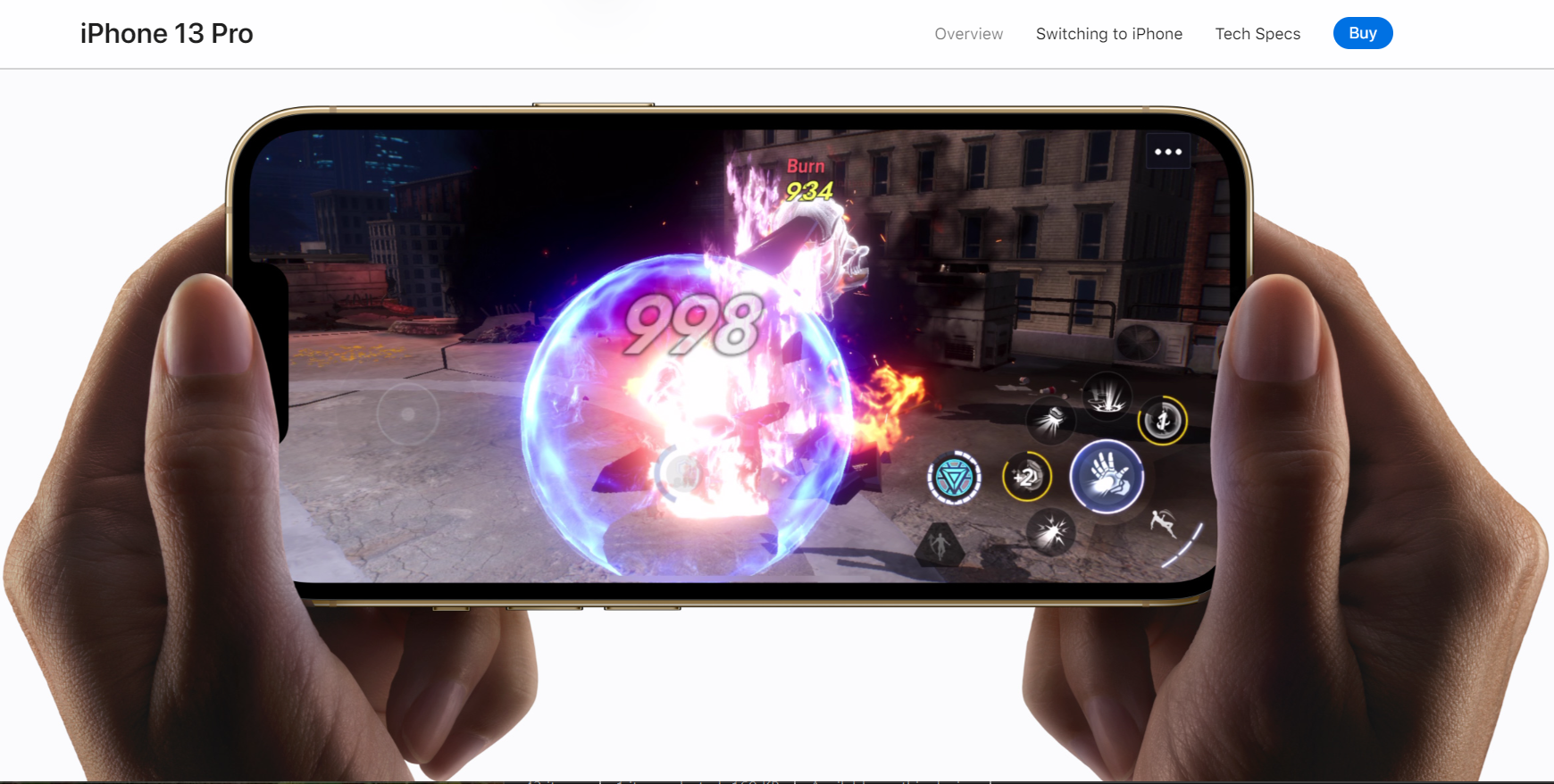 Screenshot from Apple.com, March 2022
Screenshot from Apple.com, March 2022Apple uses video to highlight features of its latest iPhone on its sales page. Their use of high-quality product images and video help sell their products online and in-store.
5. Product Reviews
The most popular form of user-generated content found on ecommerce sites is product reviews and ratings.
This section of an ecommerce product page is crucial to providing social proof to shoppers that a product will fit their needs.
eBay allows customers to rate and review products, displaying reviews below the product descriptions and sponsored items.
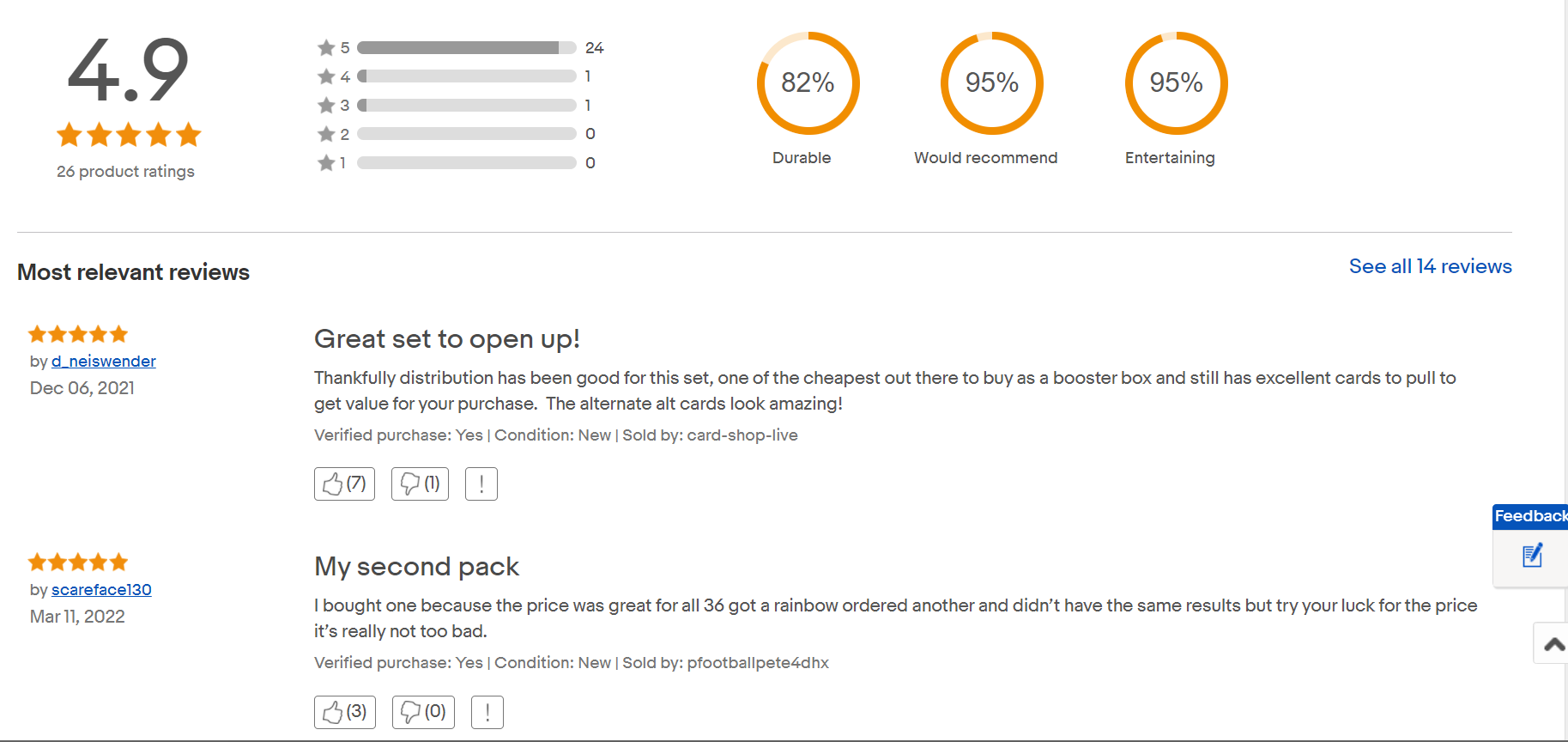 Screenshot from eBay.com, March 2022
Screenshot from eBay.com, March 2022Other eBay users also have the option to rate reviews as useful or not, moving the best reviews to the top of the list on the product page.
6. Generous Return Policy
Want to increase consumer confidence in the products you sell? Offer a generous return policy and include it on your product page.
 Screenshot from Walmart.com, March 2022
Screenshot from Walmart.com, March 2022
Place it near your add to cart button to increase the chances that it will have a positive effect on the number of purchases.
7. FAQ For Products
Another way to incorporate user-generated content into your ecommerce store is by adding a section of the most frequently asked questions by customers.
This section can help your store in a number of ways.
- Increase the number of sales by answering your customer’s top pre-sales questions about your products.
- Reduce the amount of time your customer service has to spend on answering questions about products, before and after the purchase.
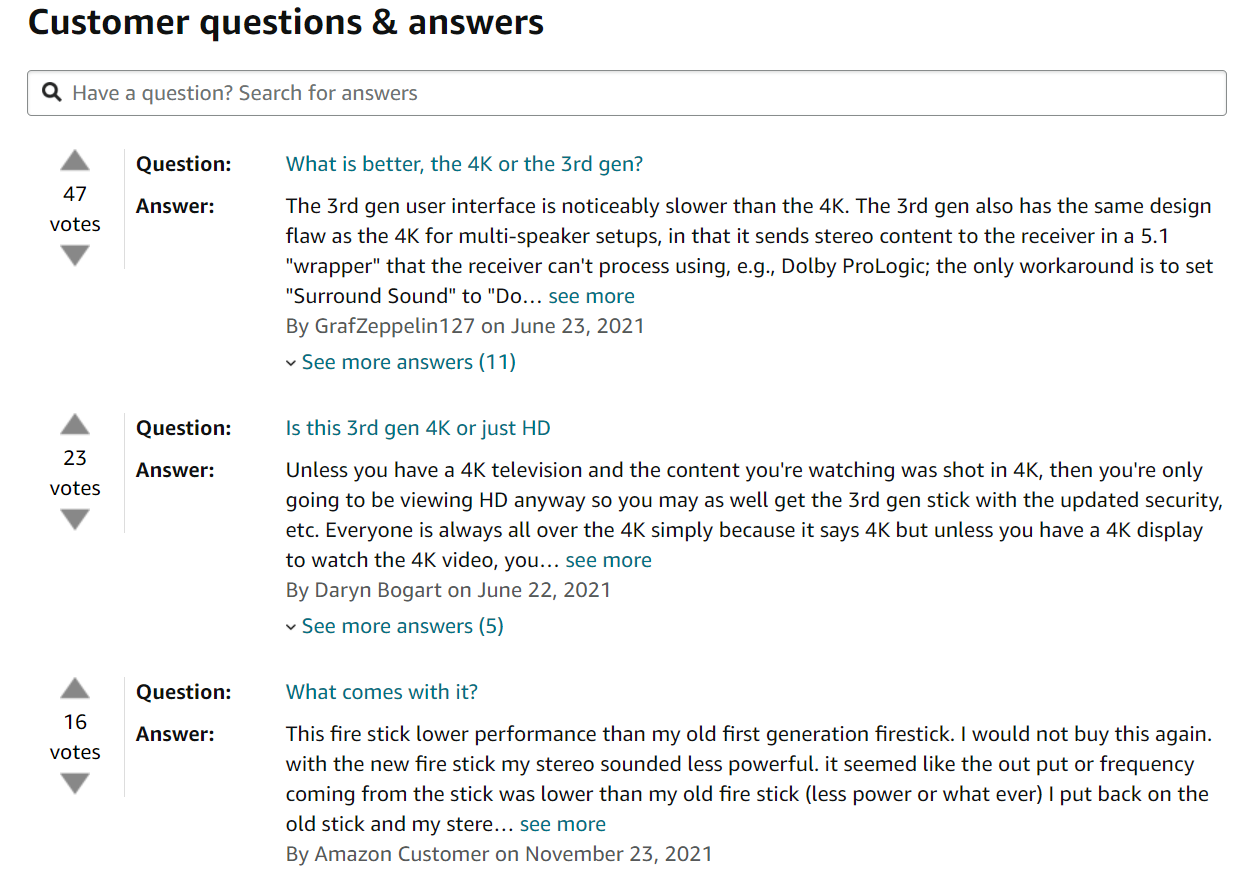 Screenshot from Amazon.com, March 2022
Screenshot from Amazon.com, March 2022Amazon’s question and answer section on product pages gives customers the ability to ask questions, answer questions, and vote up the best questions to ensure the most frequently asked ones appear at the top.
8. FAQ For The Store
In addition to the FAQ for your product pages, consider adding a FAQ page for your main store.
This should cover any of the general questions people may ask about online privacy, security, payments, shipping, returns, and other shopping concerns.
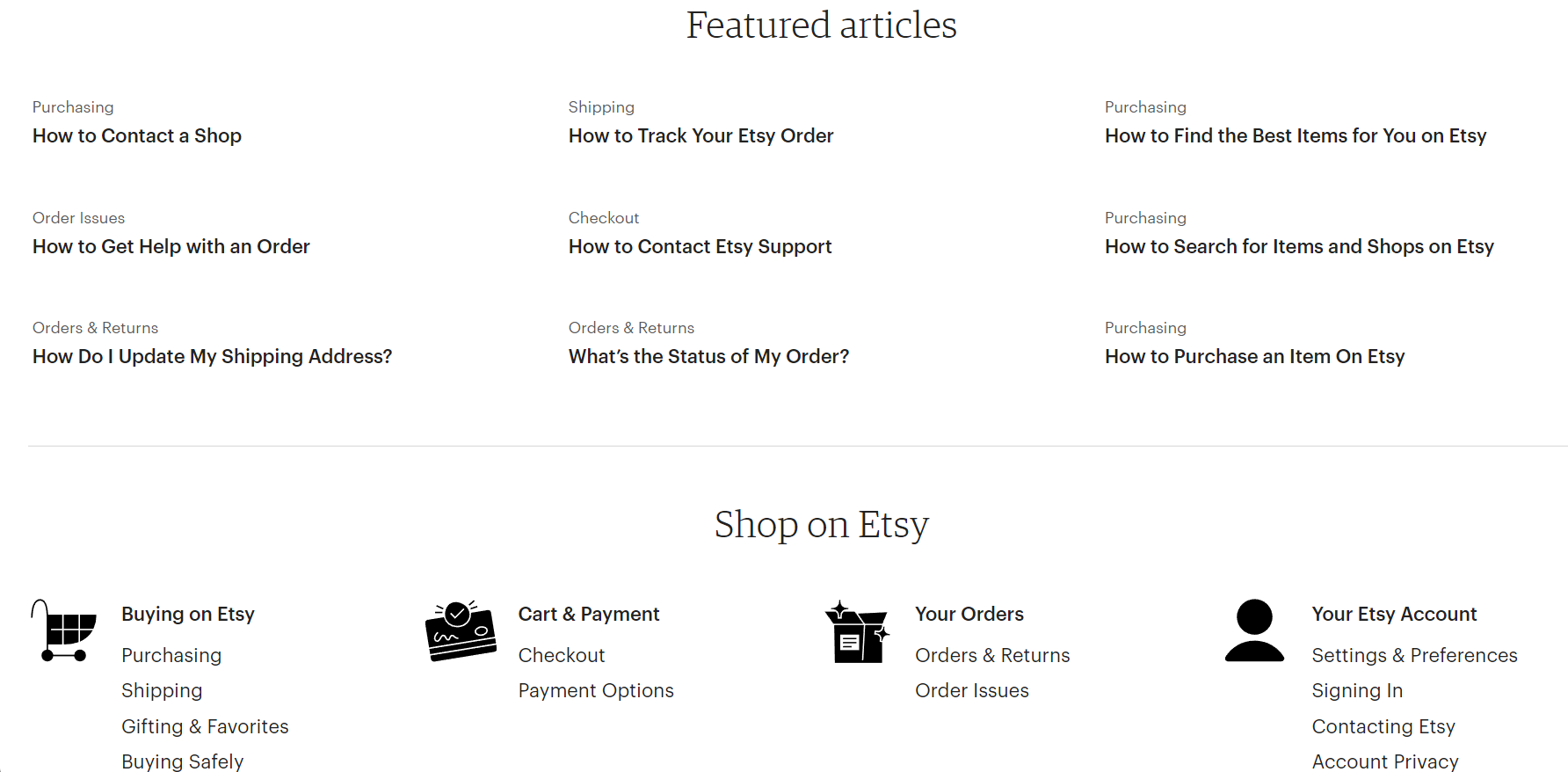 Screenshot from Etsy.com, March 2022
Screenshot from Etsy.com, March 2022Etsy offers answers to the most frequently asked questions in its help center.
This saves their customer support team from having to answer general questions and gives them more time to solve complex issues.
9. Order Tracking
Once your customer places an order, the top question on their mind is when will my order arrive.
Make it simple for customers to check their current order status on your website.
AutoZone has an order tracking page that doesn’t require customers to log in.
They simply need their email address and the order number they received in their order confirmation email.
10. Email Opt-In
According to Mailchimp benchmarks, emails sent by ecommerce businesses have an average open rate of 15.68% and a click rate of 2.01%.
This is important considering the revenue-generating potential ecommerce emails have.
If you can’t get visitors to make a purchase on your website, one of the next best conversions for your store would be to attain the visitor as a subscriber on your email list.
This would allow you to reach them with future sales and email promotions.
 Screenshot from Samsung.com, March 2022
Screenshot from Samsung.com, March 2022Samsung prompts visitors to subscribe to their email list to receive their latest offers using a pop-up.
Another way ecommerce retailers can capture email addresses is by adding an opt-in form in the header and footer of their website.
11. Push Notifications
If you want to bypass spam filters and social media algorithms, the next best way to capture your ecommerce store visitors as subscribers is through push notifications.
Push notification services allow visitors to subscribe to your latest updates in their browser.
When you have a promotion you want to notify subscribers of, you can send a message that will be delivered to their notification center via their browser.
 Screenshot from Shein.com
Screenshot from Shein.comShein is one of many ecommerce brands that allows visitors to subscribe to push notifications.
Once subscribed, visitors will see the latest messages from Shein in their desktop notifications.
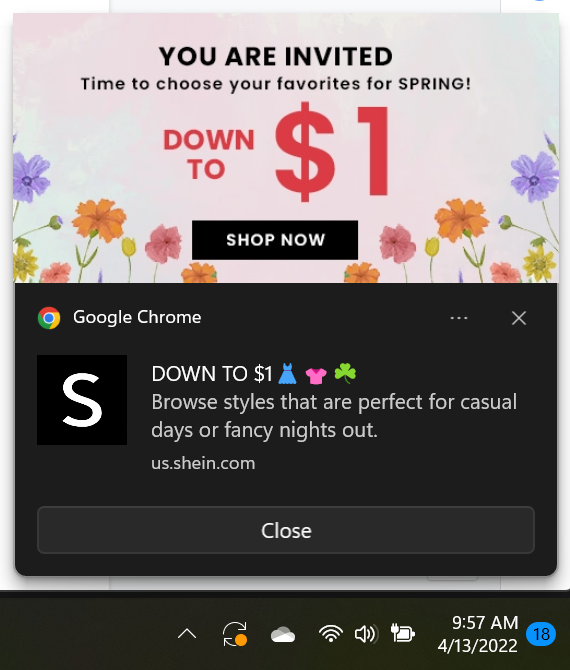 Screenshot of a push notification from Shein, March 2022
Screenshot of a push notification from Shein, March 202212. Chatbots
One of the benefits of running an ecommerce website is its ability to generate revenue, 24 hours a day, 7 days a week, throughout the year. That also means providing support to your customers during those hours as well.
According to LivePerson’s survey of 5,000 consumers, positive sentiment about the use of chatbots nearly doubled between 2020 and 2021, from 31% to 61%.
Many ecommerce stores use chatbots to assist online shoppers with basic questions and navigate them to a specific product or support page.
 Screenshot from Lowes.com, March 2022
Screenshot from Lowes.com, March 2022Lowes uses an always online expert, which is an automated assistant with specific prompts for visitors to choose when looking for a specific answer, finding a specific product, or solving a basic customer service inquiry.
13. Coupon Codes
We know that consumers often search for coupon codes on Google when presented with a coupon or discount box on a checkout page.
In the United States, 88% of consumers use coupons when shopping, using coupon sites like slickdeals.com, groupon.com, and retailmenot.com.
If you want to keep customers on your website throughout the checkout process, give them great deals via your own coupon codes.
 Screenshot from Victoriassecret.com, March 2022
Screenshot from Victoriassecret.com, March 2022Victoria’s Secret uses a bar at the top of its website to highlight its latest offer.
When visitors click on View Offers, they will get additional offers and coupon codes to apply at checkout.
14. Product Availability Filters
Do you have multiple options for customers when it comes to pickup or delivery methods?
Give customers the ability to quickly find the products that are available with their preferred pickup or delivery option.
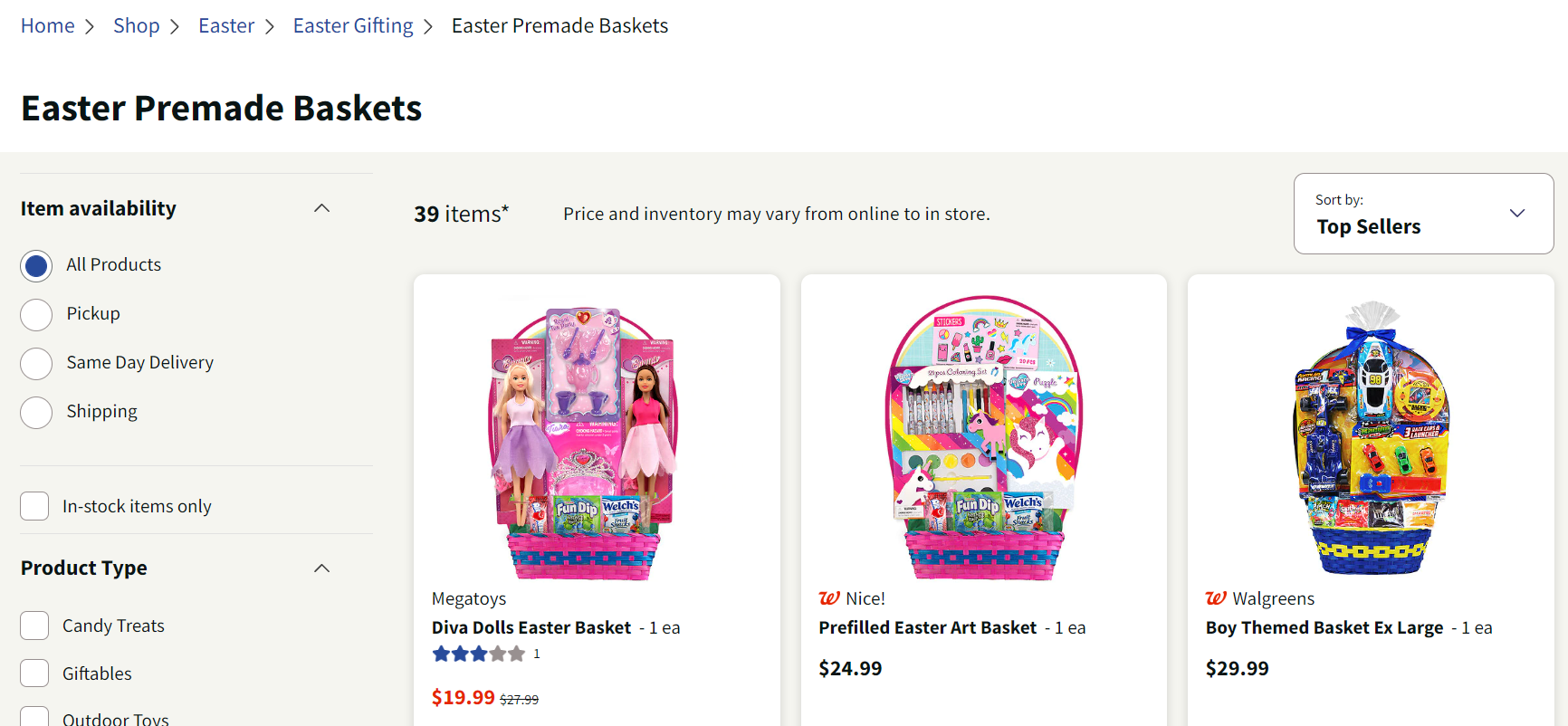 Screenshot from Walgreens.com, March 2022
Screenshot from Walgreens.com, March 2022Walgreens offers customers an item availability filter that will sort products based on their pickup, same-day delivery, shipping, or in-stock availability. This gives you the best chance to convert customers based on fast availability.
15. Mobile App
In addition to having a mobile-friendly store for shoppers to make a purchase from any device, also consider having a mobile app for your store.
Mobile apps allow you to keep your brand on your customer’s minds, placing your app icon/brand logo on the smart devices customers use most.
You don’t have to wait for customers to open up a browser or another app for social media or email to get your latest sales messages.
You can push those promotional updates through your app to any customers that have notifications turned on.
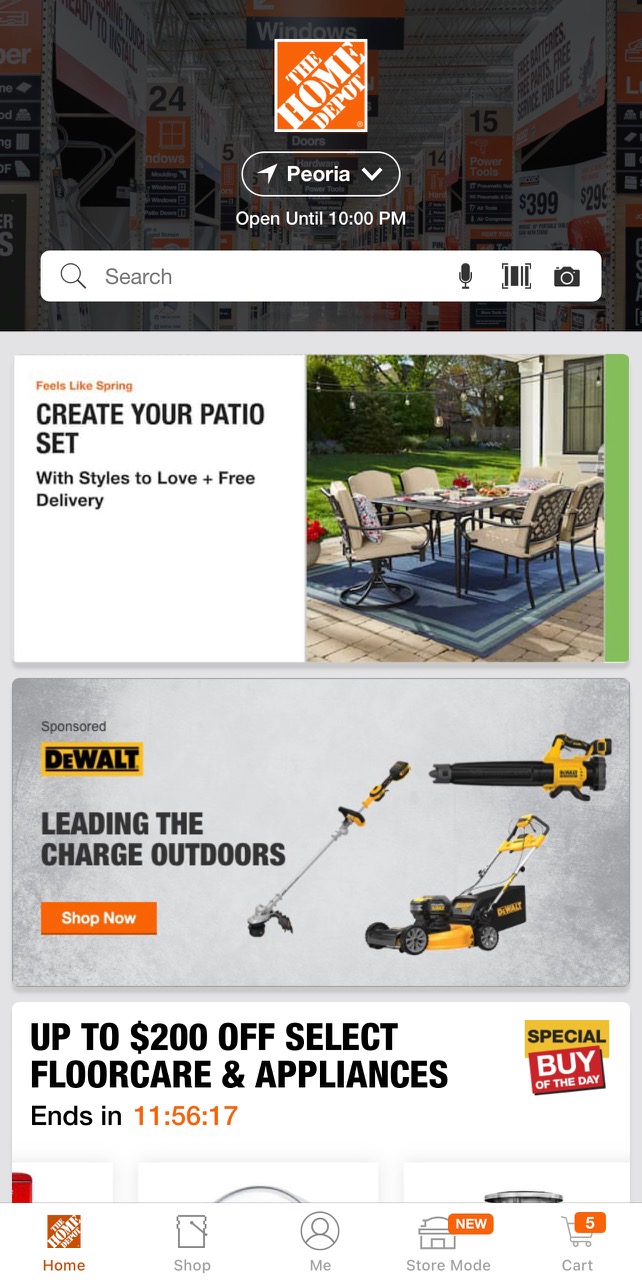 Screenshot from the Home Depot app, March 2022
Screenshot from the Home Depot app, March 2022Home Depot offers an app that allows customers to shop for products online and have them shipped to their homes or reserved for in-store pickup.
16. Gift Registries
If you do a search for gift registries on Google, you will find dozens of well-known brand retailers.
Target, Amazon, Walmart, Crate & Barrel, and Bed, Bath, & Beyond are just a few that appear on the first page of SERPs.
Why are gift registries important to driving sales? Let’s just look at wedding registries for a moment.
According to The Knot 2020 Wedding Registry Study, 80% of respondents set up a wedding registry.
CNBC reported findings from Baird’s 2022 survey that Amazon leads as the top wedding registry provider with 45% listing penetration.
 Screenshot from Target.com, March 2022
Screenshot from Target.com, March 2022Target offers gift registries for babies, weddings, and charities. You can also create a custom registry to celebrate any occasion you choose.
17. Multilingual Support
If your ecommerce store caters to customers in a specific region, you have two options to support the top languages spoken in their region:
- Depend on Google Translate to help customers translate your website into their language.
- Create multiple versions of your website for specific languages.
 Screenshot from Xfinity.com, March 2022
Screenshot from Xfinity.com, March 2022Xfinity uses English on their www subdomain, and Spanish on their es subdomain.
Content can be switched from English to Spanish using the En and Es links in the main navigation bar.
18. Loyalty Program
Do you want to increase customer retention? One way to encourage people to shop from your ecommerce store again is to offer a loyalty program.
These are typically free or paid programs where customers get private or early access to the best deals.
Many allow customers to accrue points per purchase that lead to various rewards, such as a specific dollar amount off your next purchase or a free product.
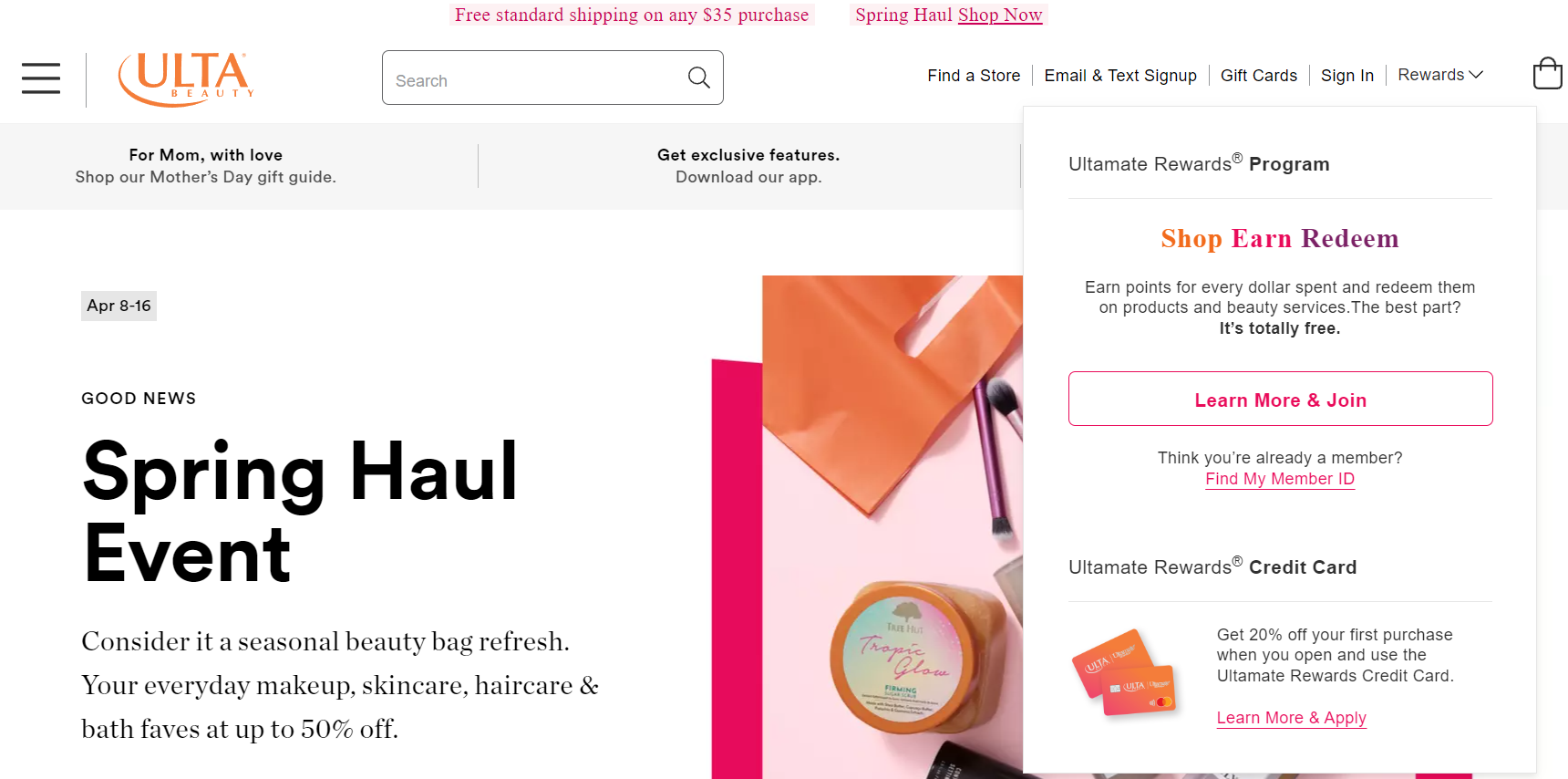 Screenshot from Ulta.com, March 2022
Screenshot from Ulta.com, March 2022Ulta is one of many brands that offer a free rewards program for their loyal customers.
Customers can join for free and earn points redeemable for products and services online and in-store.
19. Carousels
While marketers may not agree on the value of image and video carousels on the homepage, you will find many ecommerce brands use them.
Major retailers such as Walmart, eBay, Home Depot, Samsung, Wayfair, Lowes, Costco, Sam’s Club, and Kohls have carousels with their latest promotions and sales.
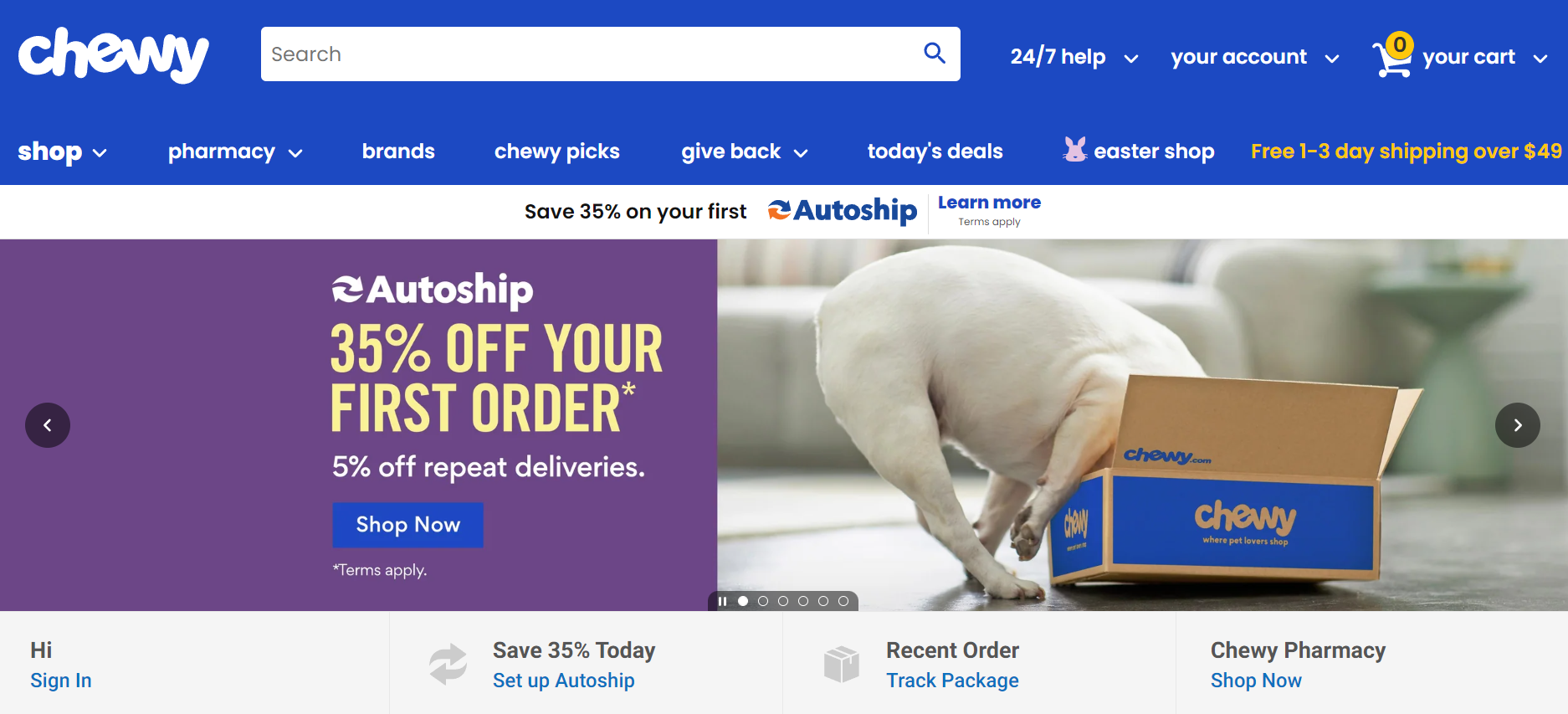 Screenshot from Chewy.com, March 2022
Screenshot from Chewy.com, March 2022Chewy is another ecommerce brand that features a carousel on the homepage. Theirs promote discounts for auto-ship orders, healthy pet food, flea & tick medications, pet bedding, and more.
20. Local Store Information
If your ecommerce brand also has physical store locations, you can boost offline sales by adding details for the nearest store to your website’s header.
This would allow customers to shop online, reserve for in-store pick up, or browse their local store inventory before going to make an in-store purchase.
 Screenshot from Coscto.com, March 2022
Screenshot from Coscto.com, March 2022Costco offers a link to the closest store based on your zip code. They also display current store hours.
21. Personal Data Policy
Depending on where your ecommerce store is based and the customers that it serves, your site may need a policy that notifies visitors of the data that is collected about them on your website using cookies from the website and other analytics tools.
 Screenshot from Michaels.com, March 2022
Screenshot from Michaels.com, March 2022Michael’s ecommerce store displays a popup advising visitors about cookie usage to enhance user experience and analyze website traffic.
Visitors then have the option to accept the policy or adjust their cookie preferences.
Start Creating Fantastic Shopping Experiences
It’s important to remember that you don’t always have to reinvent the wheel in order to provide a fantastic shopping experience for your users.
It’s simply a matter of listening to your customer’s feedback and monitoring your competitors to see if new trends in ecommerce arise.
While you don’t need to try every new feature your ecommerce platform has to offer, you should look into the ones that your customers have come to expect from the top retailers in your vertical.
Combine your customer’s feedback with A/B testing to see what implementations drive more sales and higher customer satisfaction.
Featured Image: Paulo Bobita/Search Engine Journal
